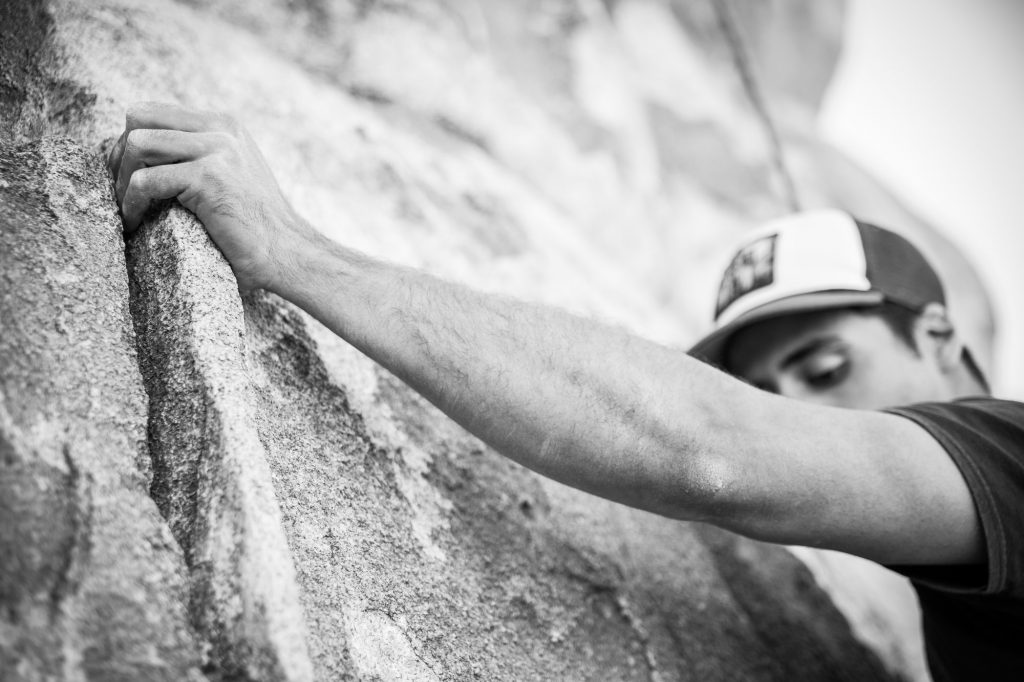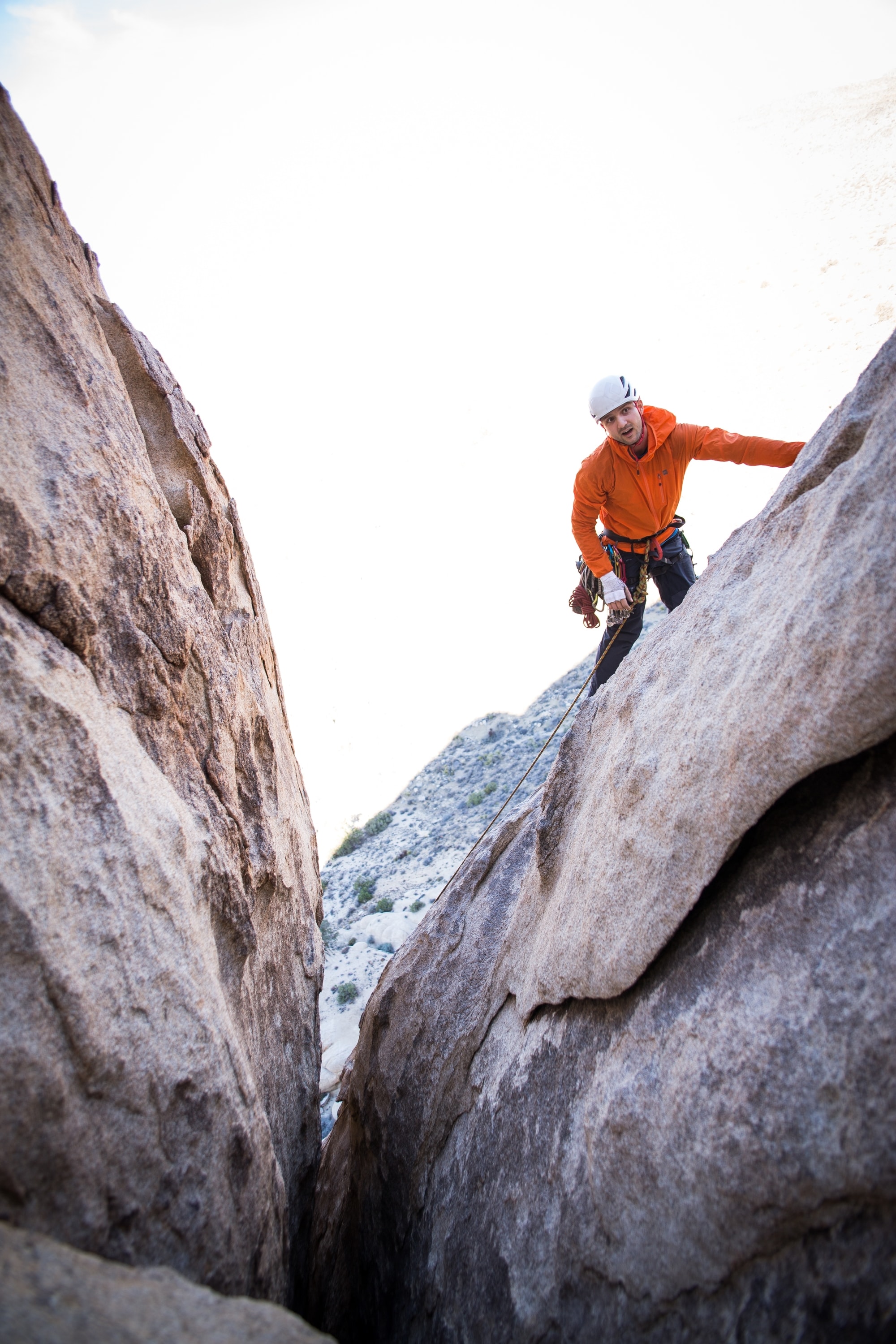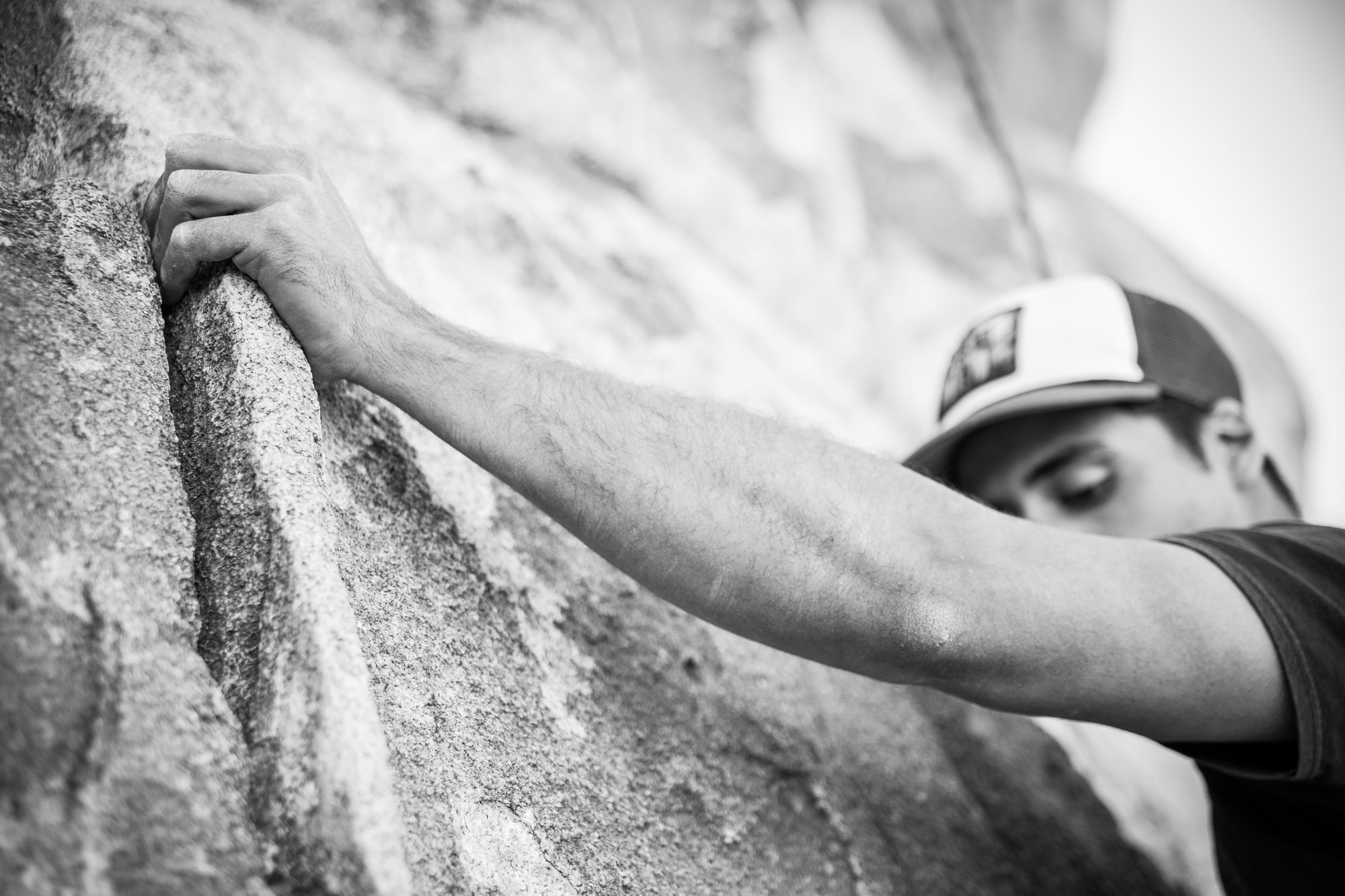
I’ll be the first to admit, I love technical-small hold-crimping hard-exhale on the twist type climbing! The smaller the holds, the better. The more precision needed, the more psych I get.
On the contrary, those gigantic jumps that span four to six feet to massive holds—that’s not my thing. Those core up, get big, gorilla-swinging Red River Gorge jug fests—not for me.
Realistically, anything that is slightly considered a dynamic, powerful problem usually just leads to me not having the motivation to do it. Shrugging these problems off as
not in my style.
We’ve all identified with a certain style that feels best to us, and climbing in that style generally comes fairly easy—even when climbing the harder grades of that type of problem or route. The technique needed for climbs of our favored style comes almost naturally to us, and unsurprisingly, we gravitate toward them first.
Since route “A” is in my style I spend more time climbing it, and since route “B” is the farthest thing from my style I avoid it at all costs. Have you guessed where this going yet?
As climbers we generally want to improve and keep having fun in our climbing while doing that. Another way to look and talk about climbs that are in our “style” is to say “my strength.” Everything we excel at quickly and easily in our climbing is within our style or strength. So with that, instead of avoiding all of those climbs that “aren’t in your style,” consider embracing them for your own progression and improvement as a climber.
Working on your style and strengths is important! Don’t get me wrong: I love climbing those small crimp lines; however, if we also make steps to improve outside the bounds of a certain style we feel comfortable with, then we grow as climbers and human beings. Diversifying our climbing allows us to become consistent learners, and more well-rounded, stronger climbers.

How to train your weaknesses
Leave your style behind and grab your climbing partner. Here are some ways you can start to work your weaknesses into your weekly climbing routine.
For outdoor climbing
Find and climb with a partner as motivated as you, but who excels in a different style. Join your partner in trying their personal projects, which should be the complete opposite of yours. Work on your own project as well on the same day to really get a sense of how much more or less you excel in certain climbing styles.
Ask yourself self-awareness questions:
- How did I feel on my project vs. my partner’s?
- Where (in my body) did I notice the difference in strength?
- What was it that made me feel weaker?
- What can I do to improve that?
For the gym rats
Instead of hitting your regular routine of training, spend two days a week only working and training your weaknesses. Rather than climbing that V9 crimp line you’ve done 10 times to impress the girl in the gym, go work on something you’re terrible at and get humbled. Dead hang those slopers, max out on pull-ups on your weakest hold, stop jumping and try to use your feet, moving them three times before you move your hands, etc. Embrace the beatdown.
Dedicated outdoor climbers with an endless supply of different rock close to home
If you’re one of those fortunate people who live either on the road traveling or in places like Colorado and Arizona where within an hour’s drive you can climb on any type of rock you want, in any style you want, then try this fun strategy that also keeps your psych high on various projects.
Find a project in each of the different rock type zones and rotate your climbing schedule around to incorporate climbing in all of them. In Arizona you can do this easily by having a sandstone project in Sedona that you go to on Monday, a limestone project in Flagstaff you relentlessly throw yourself at on Wednesday, and a granite technical test piece you attempt on Friday in Prescott or Tucson. If you want more for the weekend, there are also basalt splitters you can get plenty of gobies on with, quartzite sport, dacite, and more …
Get an accurate assessment of your climbing
Find a friend who is a coach, or hire a coach to give you advanced and specialized feedback based on your climbing. Theres a plethora of online resources, and Mindful Routes can also send you free self-evaluation forms to use while you climb in order to better judge for yourself what you need to work on in your climbing.
Final considerations
At the end of the day, do what you want to do. If progression is something you are intrigued by and want to increase, leave your style behind and begin working on the hard work that needs to be done to be a better, well-rounded climber. We already make 100 excuses every day, don’t let style be another one to hold you back.
Want more climbing content? Get our awesome climbing newsletter, delivered weekly.
Explore more
- Our 30+ most popular articles ever
- Today’s Best Rock Climbing Gear Deals
- 200+ rock climbing videos
- Combat the Pump: An Introduction to Progressive Muscle Relaxation
- Long Term Projecting: 7 Keys to Unlocking Success
- The Climber Athlete: An Argument for Weightlifting
- Visualization for Climbing: What it is and How to Use It
- Video: The Fins Project—Route Development and Sustainable Bolting in Idaho
- 10 Tips to Climb Harder By Climbing Smart and Efficiently
- Get daily updates by Liking us on Facebook
- Free rock climbing PDFs on technique, training, knots, and more








